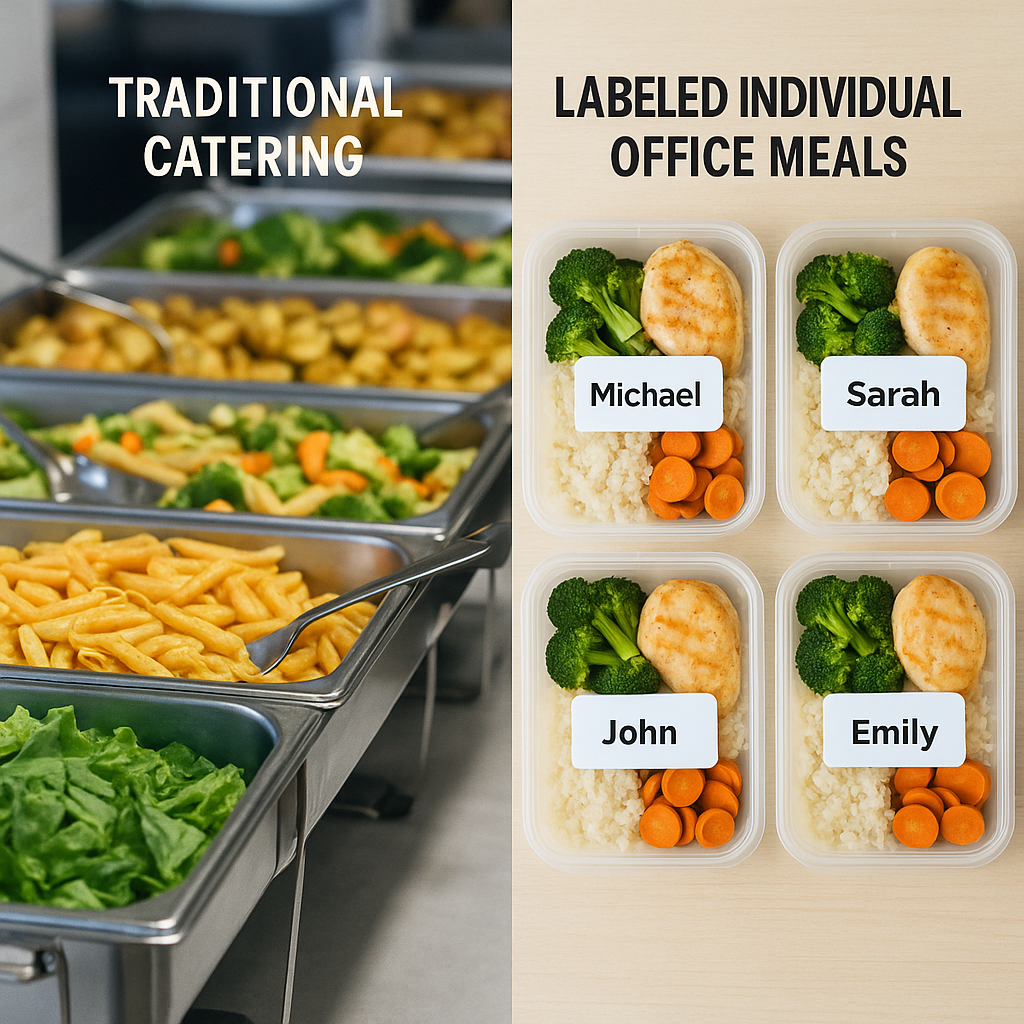The Recipe for Success: Why Company Culture and a Good Sandwich Matters
Employer-paid lunches are a simple yet impactful way to boost morale, foster team cohesion, and build a positive company culture. By offering diverse, healthy meals that cater to employees’ preferences, companies can enhance job satisfaction, promote well-being, and attract top talent. hungerhub makes it easy to implement a lunch program that supports employee happiness and workplace success.
The Recipe for Success: Why Company Culture (and a Good Sandwich) Matters
In the modern workplace, fostering a positive company culture is crucial for attracting and retaining top talent, boosting employee morale, and enhancing overall productivity. One surprisingly effective way to build a strong company culture is through providing lunches paid for by employers. This simple gesture can have profound impacts on employee satisfaction, team cohesion, and the company’s overall success. Let’s explore how employer-paid lunches can enhance company culture and provide practical tips on implementing an effective lunch program.
The Impact of Employer-Paid Lunches on Company Culture
1. Boosting Employee Morale and Satisfaction
Providing free lunches shows employees that their well-being is a priority. This gesture of appreciation can significantly boost morale and job satisfaction. Employees feel valued and cared for, which can lead to higher levels of engagement and loyalty.
2. Encouraging Social Interaction
Shared meals offer a natural setting for social interaction among employees. This can break down barriers between departments, foster friendships, and improve communication. Regularly eating together helps build a sense of community and camaraderie, essential components of a positive company culture.
3. Promoting Work-Life Balance
When employees don’t have to worry about meal prep or finding food during their workday, it reduces stress and helps them maintain a better work-life balance. This can lead to increased productivity and a more focused workforce.
4. Enhancing Health and Well-Being
Providing healthy meal options promotes better eating habits, which can improve employees’ overall health. Healthier employees are more productive, take fewer sick days, and contribute positively to the work environment.
5. Attracting and Retaining Talent
A company that offers free lunches stands out in the job market. This perk can attract high-quality candidates and make current employees more likely to stay, reducing turnover and the costs associated with hiring and training new staff.

How to Implement an Effective Lunch Program
Implementing a lunch program that enhances company culture involves careful planning and consideration of employees’ needs and preferences. Here are some practical steps to create a successful lunch program:
1. Assess Employee Preferences
Start by understanding your employees’ dietary needs and preferences. You can build your meal plan here, after conduct surveys or hold informal discussions to gather information on food allergies, dietary restrictions, and preferred cuisines. This ensures that the meals provided will be well-received and inclusive.
2. Partner with Local Restaurants
Partnering with local restaurants can offer a variety of meal options and support the local economy. hungerhub’s catering solutions, for example, leverage local restaurants to provide diverse and high-quality meals that cater to various dietary needs. This approach ensures freshness and variety, keeping meal times exciting and enjoyable.
3. Offer a Variety of Healthy Options
Focus on providing balanced meals that include a mix of proteins, vegetables, and whole grains. Offering healthy options not only promotes better eating habits but also boosts energy levels and productivity. Including vegetarian, vegan, gluten-free, and other dietary-specific options ensures inclusivity.
4. Create a Comfortable Dining Space
A dedicated dining area where employees can relax and enjoy their meals can enhance the lunch experience. Ensure the space is comfortable, clean, and inviting. This setting encourages employees to take a proper break and socialize with colleagues, further strengthening workplace bonds.
5. Schedule Regular Team Lunches
Organize regular team lunches to foster team building and open communication. These events can be informal or themed around specific topics or celebrations. Regular team lunches provide opportunities for employees to interact with colleagues they might not work with daily, fostering a sense of unity and collaboration.
6. Gather Feedback and Adjust
Regularly seek feedback from employees about the lunch program. Use surveys or suggestion boxes to gather input on meal satisfaction, preferences, and any improvements needed. Being responsive to feedback shows employees that their opinions matter and helps refine the program to better meet their needs.
7. Highlight the Program’s Benefits
Communicate the benefits of the lunch program to your employees. Highlight how it promotes health, well-being, and a positive company culture. Sharing success stories and positive feedback can increase participation and appreciation for the program.
Conclusion
Employer-paid lunches can significantly enhance company culture by boosting morale, fostering social interaction, promoting health, and attracting and retaining talent. Implementing an effective lunch program requires understanding employee preferences, partnering with local restaurants, offering healthy options, creating a comfortable dining space, scheduling regular team lunches, gathering feedback, and highlighting the program’s benefits. hungerhub’s innovative catering solutions make it easy to provide high-quality, diverse meals that cater to the unique needs of your workforce, ensuring a successful and impactful lunch program.
For more information on how hungerhub can help implement a lunch program that enhances your company culture, visit hungerhub’s website.
References
- Harvard Business Review. (2020). "How to Keep Employees Happy and Productive."
- Forbes. (2021). "The Impact of Employee Benefits on Engagement and Retention."
- American Journal of Health Promotion. (2019). "The Role of Nutrition in Employee Wellness Programs."
- Gallup. (2019). "The Relationship Between Employee Engagement and Well-Being."
































.png)




























